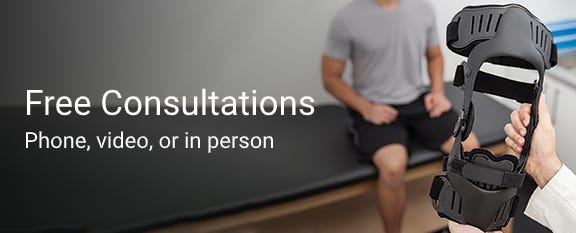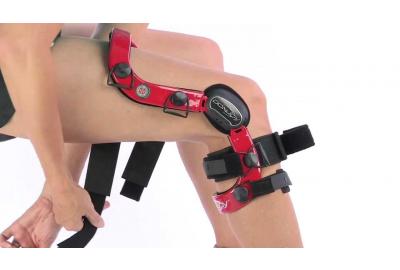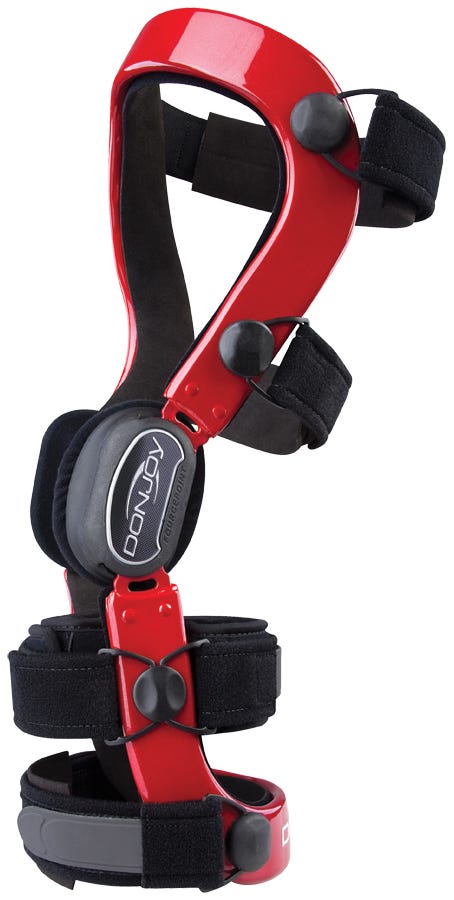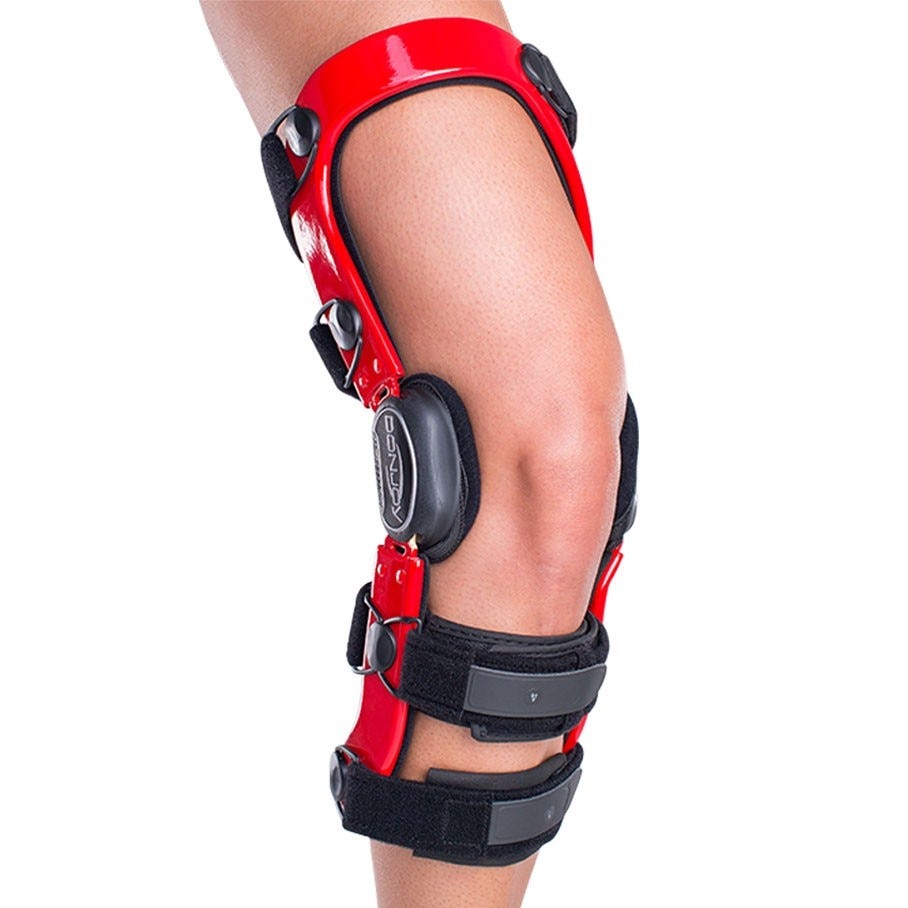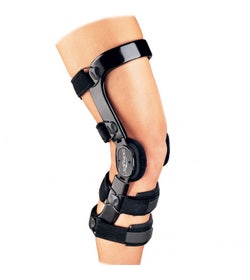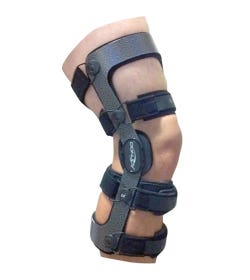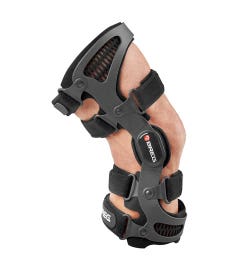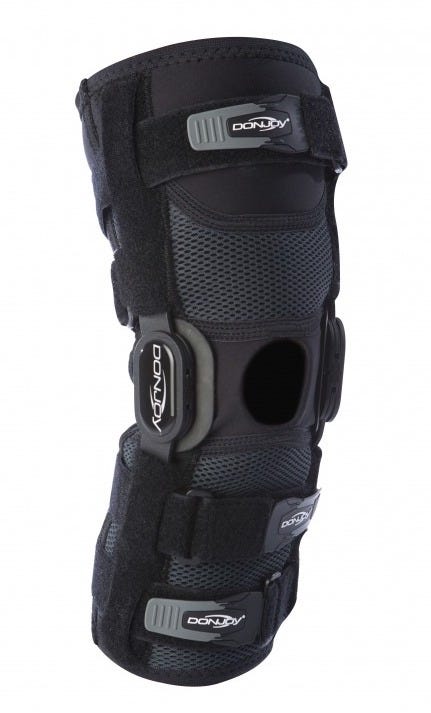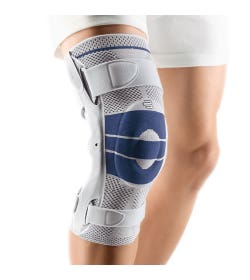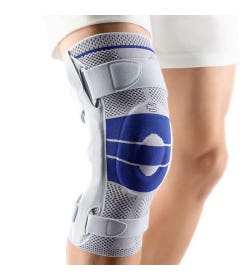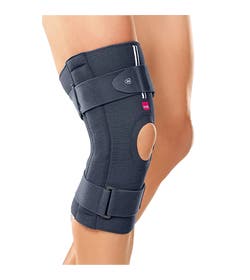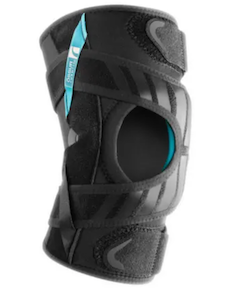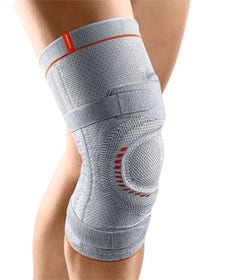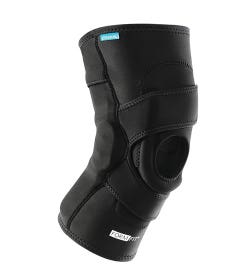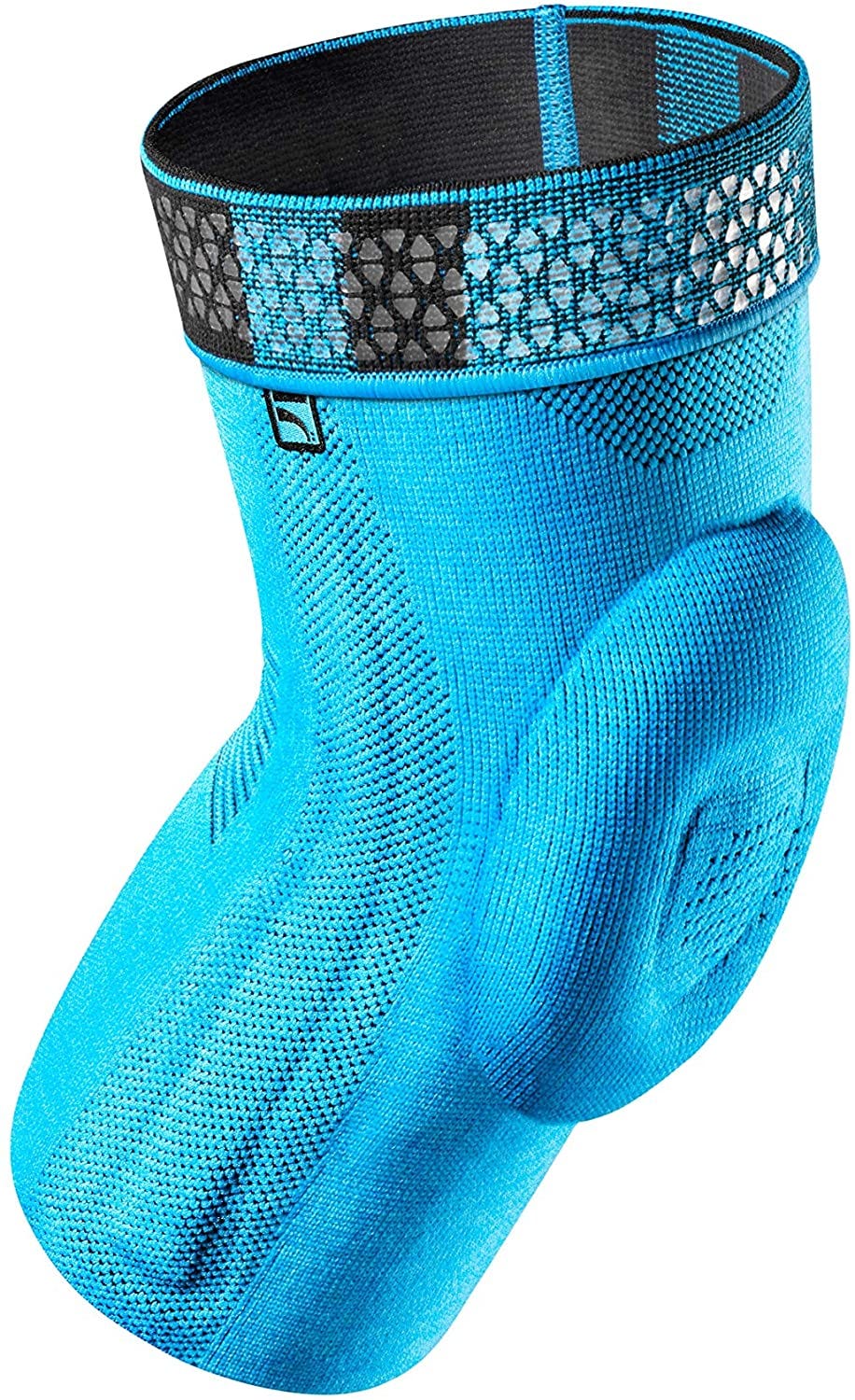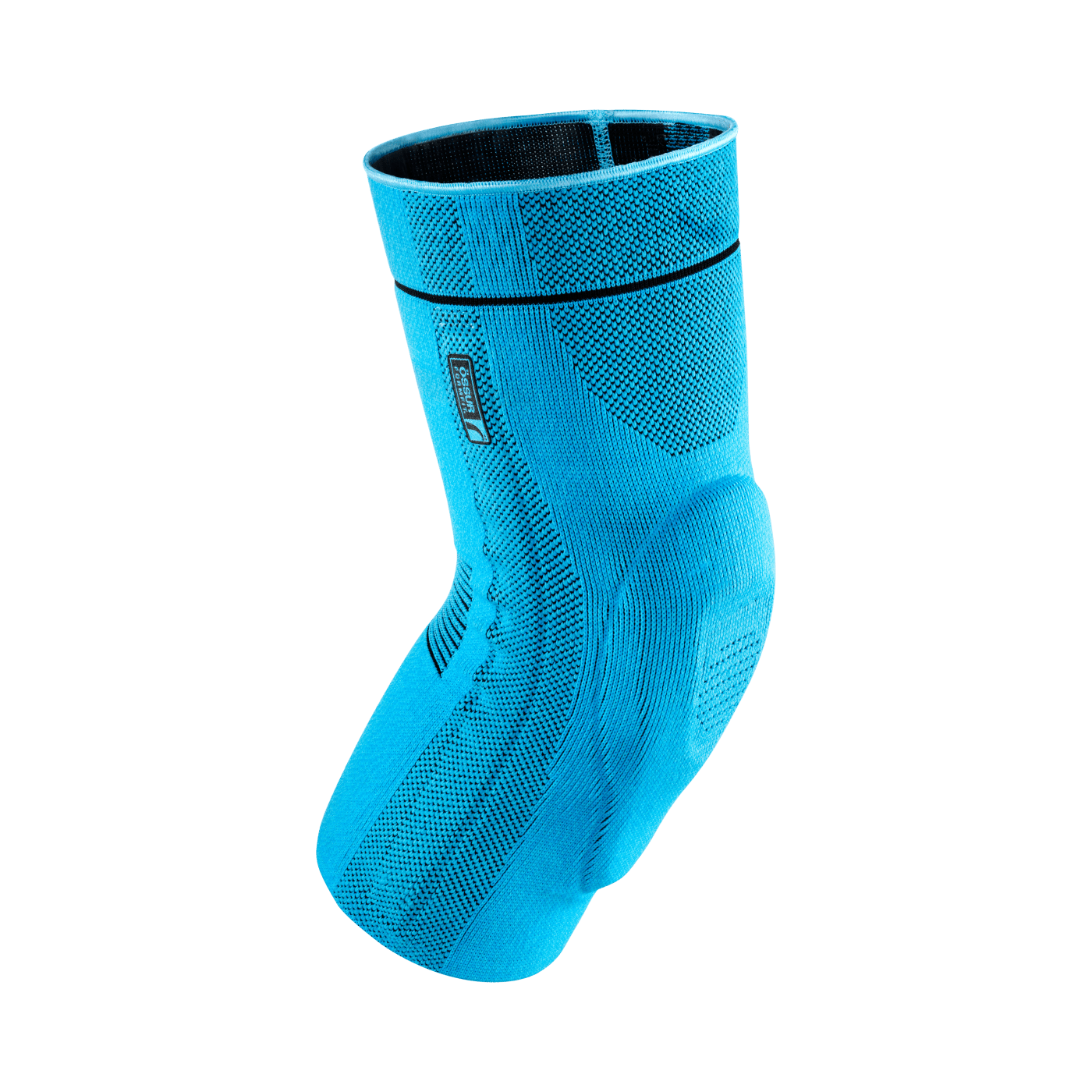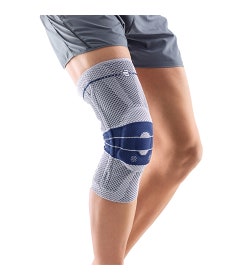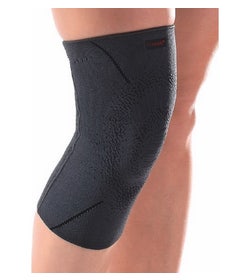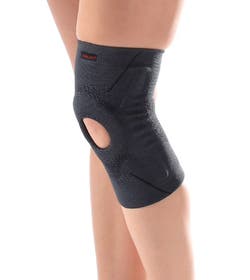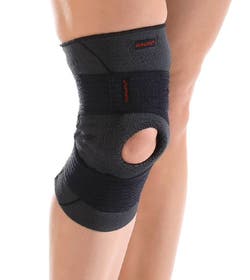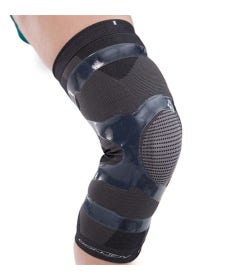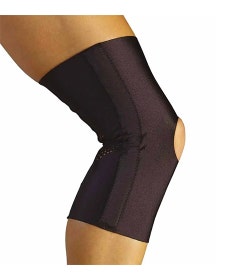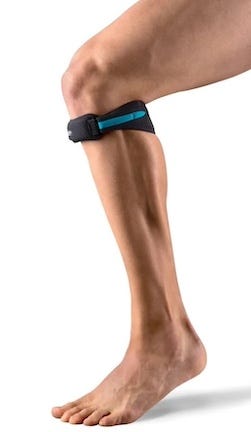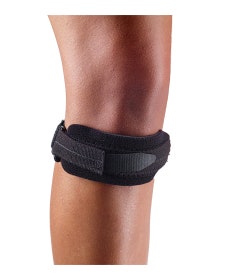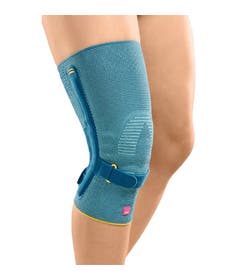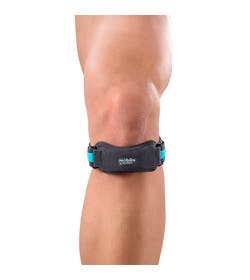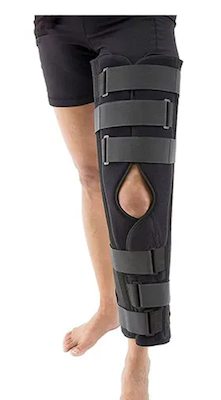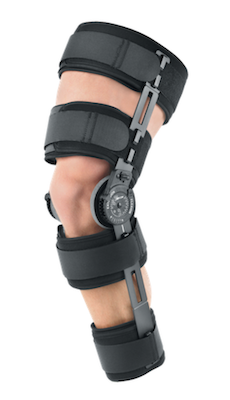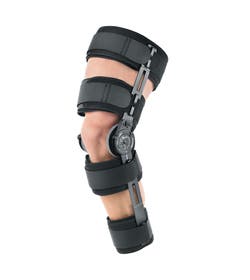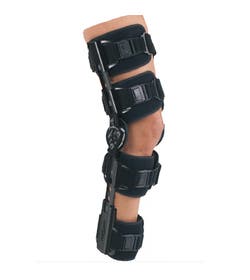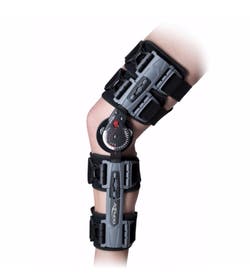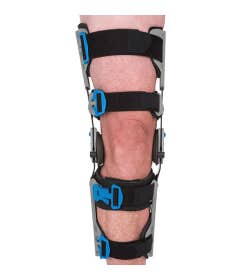Reviewed for 2025
What's In This Post
Click to jump to section
First, what are the top brands for knee braces?
If you want to buy with confidence, stick with the industry leaders in bracing like DonJoy, BREG, Ossur, and Bauerfeind who have spent millions of dollars on research and development. If you select a knee brace from one of these brands (or the other brands carried by OrthoMed) you can be sure you're getting a medically proven product that has been used by millions of people, and which is made with high quality durable materials.
The knee brace industry is continually evolving, and many new design types are brought to market each year. You may see ads for braces with 'springs' or other mechanical assistance, as well as supports built into garments like tights. These innovations are interesting and may have some benefits, but with only a limited amount of research it is difficult to know. There are also an increasing number of 'knock off' products sold online that you should avoid, which are simply inexpensive copies of the real thing (but made with poor quality materials and missing subtle, but important features that you may not see with the naked eye).
Second, understand your condition
Knee pain is common and affects people of all ages and activity levels. Knee pain may be the result of an injury (such as a damaged ligament) or degenerative changes such as osteoarthritis.
Pain caused by osteoarthritis is located in at least one of three compartments of the knee: the inside (medial), outside (lateral) or behind the kneecap (patellofemoral). Other forms of knee pain can be located throughout the knee joint and may involve the kneecap; whether it be improper tracking, tendonitis or chondromalacia. Your pain and stiffness may be worse after a particular type of movement (such as going up and down stairs, or running). Signs and symptoms that usually accompany knee pain include:
- Swelling and stiffness
- Redness and warmth to the touch
- Weakness or instability
- Popping or clicking noises
- Inability to fully straighten the knee
Many types of minor knee pain respond well to self-care. Physical therapy and knee braces also have been shown to help. In more severe cases you may require a surgical procedure (such as a ligament reconstruction, arthroscopy, cartilage repair, osteotomy, and knee arthroplasty).
Knee braces can be very helpful to manage pain associated with knee injuries and to provide protection from future injuries. You may also be able to delay the need for surgery. There are a variety of brace designs to choose from that can help you manage pain, recover and prevent re-injury, whether it be for sports, daily activity, or post-surgery.
It is important to know your diagnosis before picking a knee brace because knee braces are designed to treat specific injuries and conditions. Without knowing your diagnosis, you risk selecting the wrong type of brace, which may worsen your injury or provide little to no relief. Consulting with a doctor or physical therapist can be helpful in determining what knee issues you have. With surgical procedures your surgeon will have particular recovery and rehabilitation protocols that they will want you to follow.
Third, review knee brace options and what they are used for
One way to think about (or categorize) knee braces is the 'rigidity' of the brace: for example, a solid sturdy frame compared to a softer more flexible one. In the next section of this guide, we discuss all of the different types of knee braces and what they are used for, to try and help you narrow down your options.
Rigid Frame Knee Brace (includes both custom and ready made)
Rigid knee braces can go by many names such as 'double upright brace', 'dual hinged knee brace', 'unloader' and others. Usually, they are made from combinations of metal (like aluminum), some more exotic materials (like carbon fiber), plastic, elastic material and strong straps. There is typically a hinge on either one or both sides of the brace. Most braces have a solid frame that is on both sides of your knee (such as the Defiance line from DonJoy), however some designs use a combination of rigid plastic material and strapping instead of a full frame (popularized by the Unloader One series developed by Ossur). With any of these rigid styles, the primary purpose is to have multiple 'points of leverage' on the leg to allow the device to do its' job properly. They come in many sizes, colours and designs.
Ligament (ACL, MCL/LCL, PCL) rigid frame braces can be used for a wide range of applications from athletes who need protection and stabilization during sports and support pre and post-surgery (repair of the ACL, MCL or PCL). Braces designed for ligament support have hinges situated on both sides of the knee to help stabilize the knee joint and to prevent it from moving unnaturally. They can prevent a bad twist, and lessen the severity of ligament injuries during a fall or sudden movement. Hinges can also prevent hyperextension of the knee. We have an indepth guide to selecting a ligament knee brace if you want to read more.
Osteoarthritis rigid frame braces, typically called "unloader" or "offloading" knee braces have hinges (and sometimes strapping) on one or both sides of the knee. The hinges (or strapping) gently applies pressure to one side of the knee to unload the painful/arthritic compartment of the knee. This increases joint spacing on the impacted side and therefore reduces pain and improves knee joint function. We discuss osteoarthritis knee braces in more detail in our blog post: what knee brace should you choose for osteoarthritis?
Also, used for other common knee Injuries and conditions, such as knee Hyperextension.
Soft Hinged Knee Brace (includes hinged knee sleeves and wraps)
Soft hinged braces have hinges or 'splints' on either side of the brace to provide support for the knee joint for slight instability, or osteoarthritis of the knee. They can be designed in a sleeve or wrap style, with some models offered in both versions.
Some soft hinged braces include a pad that surrounds the kneecap to provide a secure hold for the kneecap to guide proper patella movement in the femoral groove.
Open vs Closed popliteal
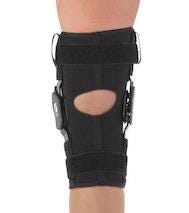

An open popliteal has a small opening behind the knee which can help keep the body cool. The closed popliteal has no opening on the back of the knee and is recommended for individuals who have bursitis at the back of their knee.
Open vs Closed patella
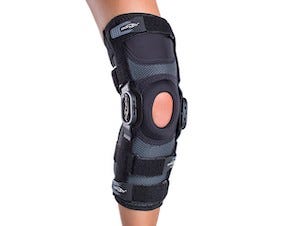

Braces with an opening at the front allow the knee cap to sit in a round "donut", "J", "C" or "U" shaped cushion to support the patella movement (called patella tracking). A closed brace at the front are for those that do not suffer from maltracking of the patella.
Many soft hinged knee braces also include some compression (through knitted fabric designs), and strap systems to provide additional support for the knee. Other important features include open or closed popliteal, and open or closed patella.
Patella Stabilizer
These devices are typically made of breathable nylon or other elastic compressive materials and are worn over the knee joint. They often feature a padded ring or horseshoe-shaped support that fits around the patella, helping to keep it in place during movement. Some patella stabilizers feature adjustable straps, or hinges for greater control over knee movement.
Patella stabilizers can be beneficial for individuals with patellar instability (an unstable kneecap) and preventing subluxation / maltracking (the kneecap has briefly slid out of its normal track). With this condition, the kneecap doesn’t 'track' or move the way it should: it moves out of the natural groove at the end of the thighbone (femur) that holds it in place. Normally, the kneecap glides smoothly in this groove, allowing it to track in a straight line.
Stabilizers work by placing a consistent tension or 'pull' on the kneecap during flexion and extension, which realigns the patella to encourage it to be in it's proper position.
-
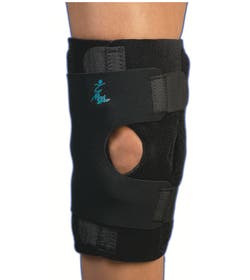 MedSpec Dynatrack with Hinges - Patella StabilizerAs low as $194.03
MedSpec Dynatrack with Hinges - Patella StabilizerAs low as $194.03
Compression Knee Sleeve
Wearing a knee sleeve can also offer protection in sports like basketball, running or weightlifting that place a lot of impact on the knees from squatting, running, and jumping.
Compression Knee Sleeves are normally a 'pull on' style device. Most sleeves incorporate compression through a knitted or elastic type fabric. They may also feature an integrated pad at the kneecap to assist with patella tracking support.
Many knee sleeves offer certified medical grade compression and have material that offers moisture wicking and breathability, keeping your knee cool during wear.
Designs also include light weight stays (like a flexible splint that runs along the side of the brace) to ensure the garment doesn't bunch around your knee during repetitive movements.
Knee Strap
Unlike soft knee braces, which typically cover the entire knee joint, patella straps are narrow bands that wrap around the patella tendon (just below the patella bone). They are often made of elastic, nylon fabric, or rubber material and sit just below the kneecap.
Knee straps work by applying gentle pressure to the patellar tendon.
A knee strap helps lessen the amount of pressure on the patella tendon caused by movement, with conditions like Patellar Tendonitis: a common overuse injury, caused by repeated stress on the patellar tendon resulting in tiny tears in the tendon. The tears cause pain and reduced function from inflammation and weakening of the tendon. Over time, the pain worsens and starts to interfere with playing sports and daily movements such as going up stairs.
Knee straps also reduce the pull on the patella tendon (at the insertion point), in the treatment of Osgood Schlatter Disease (a common cause of knee pain in growing adolescents). This pain is a result of the bones developing faster than the muscles/soft tissues around them.
Some individuals find that patella straps are particularly helpful during activities that involve repetitive jumping or running, as these activities can place significant stress on the knee joint. They are also used for everyday activities.
Knee Immobilizer and ROM Knee Brace
There are two styles of immobilizing knee braces: Knee Immobilizers and Post-Operative Range of Motion (ROM) knee braces. They are both worn for a more limited period of time (during the recovery process) until you can transition out of the brace (for example following partial or total knee replacement), or into a brace for everyday use (like a ligament brace for protection against future ligament tears). They are used for post-surgical recovery and rehabilitation for procedures such as knee arthroscopy, partial knee replacement, total knee replacement, or a ligament repair surgery.
Knee Immobilizers can go by a few different names, for example 'tri-panel' knee immobilizer or 'zimmer' splint. They are fairly simple devices, and are typically made from a combination of materials such as foam, plastic, metal and nylon. They consist of a long wrap-around sleeve (or multiple panels) made of a soft, padded material that fits snugly around the knee. The immobilizer contains rigid supports, typically made of metal, that run along the sides or back of the knee and help to stabilize the joint by immobilizing the leg in a straight position. The brace is fastened in place with adjustable straps that can be tightened or loosened to provide a customized fit. During rehabilitation exercises, the splint would be removed as you work on improving range of motion to strengthen the knee.
A ROM knee brace (also called a post-operative or post-op ROM brace) is a more complex device with rigid metal support bars running down both sides of the leg that are fastened to the leg using Velcro or tension straps. At the knee joint center, the support bars attach to an adjustable post-operative range of motion hinge. The hinge is able to stop movement of the knee entirely, limit the range of motion allowed, or allow movement to occur without restriction (dependent on how the brace is set up). In addition to range of motion control, they are usually length adjustable using a 'telescoping' feature to allow for optimal leverage to immobilize the knee joint. For a more comfortable fit, the metal support bars can typically be bent to better contour to the shape of your leg (this adjustment should be done by a healthcare professional).
Normally, during the initial stage of rehabilitation the knee will be immobilized in a straight position (using the drop lock feature on the hinge). Over the next couple of days/weeks (with the guidance of a physiotherapist), as you recover, your range of motion is increased within prescribed parameters (to allow for certain degrees of movement). The ROM hinge has the capability to adjust (in 10 degree increments) the amount of flexion and extension you can perform while wearing the brace. The protocol for adjusting range of motion will depend on the type and severity of the knee injury, as well as the specific surgical procedure performed. This will be prescribed by your surgeon.
Fourth, if you're not sure get advice from a qualified source
Ultimately, the choice between what type of knee brace you require will depend on your specific needs and circumstances.
OrthoMed has an experienced team that is ready to assist you with selecting the right brace design, brand and model for your unique needs. If you have a diagnostic report or diagnosis from your doctor we can use that information to assist us in recommending specific knee braces that may be the best fit for your condition. Contact us today for a free consultation with any of our products, or book your custom knee brace consultation, it's free!
Check out our credentials and learn more about what we do.
